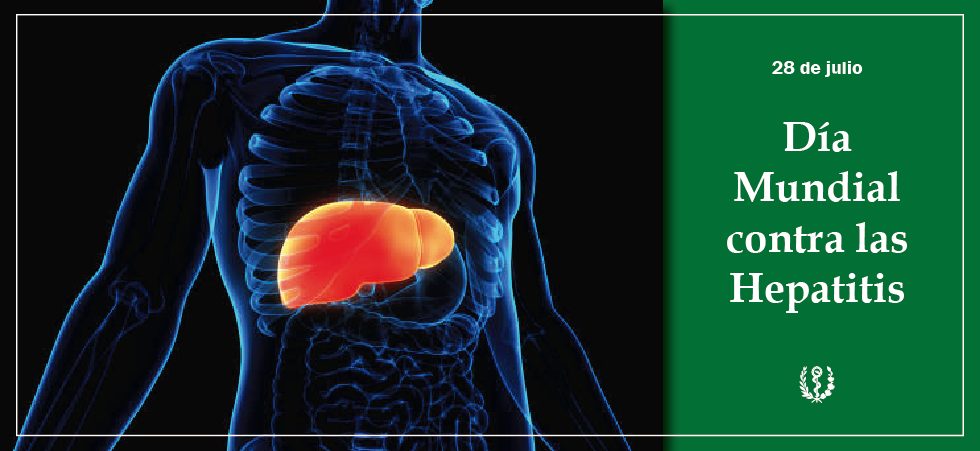
HAVANA, Cuba, Jul 28 (ACN) Over the past five years, the incidence of viral hepatitis has decreased in Cuba, with about 70 cases of hepatitis B and 200 of hepatitis C per year, so they are not a health problem and work is being done in line with the initiative of the World Health Organization (WHO) to eliminate them by 2030.
Dr. Maria Julia Matos Morejon, head of the viral hepatitis program of the Ministry of Public Health ( MINSAP by its Spanish acronym), affirmed that the National Health System maintains strict surveillance of this disease which affects the liver and, if infected with the B and C viruses, can lead to cirrhosis and liver cancer.
On the occasion of today's World Day against the disease, she explained that during 2021, 35 cases of acute hepatitis B were reported in the country compared to 58 in 2020, for a rate of 0.46 per 100,000 inhabitants, which decreased by 39.7 % compared to the previous year.
While of chronic hepatitis B, 21 cases were diagnosed in 2021 against 73 the previous year, for a rate of 0.28, and decreased the report by 71.3 %, th expert detailed.
Matos Morejon, who is also a first-degree specialist in Hygiene and Epidemiology, clarified that most of the patients did not have a history of vaccination against hepatitis B or did not complete the three-dose schedule.
Regarding acute hepatitis C, she pointed out that it has a decreasing behavior, in 2021 89 cases of acute hepatitis C were reported against 140 of the previous year, for an incidence rate of 1.18 which decreases by 36.4 %.
The MSc in Infectious Diseases noted that in the past year, 101 cases of chronic hepatitis C were detected against 194 in 2020, for a rate of 1.34 which decreases by 47.9%.
Cuba has a Strategic Plan to eliminate the disease.
Matos Morejon stated that the viral hepatitis program was created in Cuba in 1987 and over the years it was transformed until it was integrated into the National Strategic Plan for the prevention and control of sexually transmitted infections, human immunodeficiency virus and hepatitis in 2018.
This plan is in effect from 2019 and until 2023, and its main objective is to accelerate progress towards the end of the disease as a public health problem by reducing the incidence, complications and mortality from this cause, she added.
The Dr mentioned that among the main actions is the prevention of mother-to-child transmission of hepatitis B, which is carried out from primary care with early detection in the pregnant woman, who is followed up by gastroenterology and treatment.
At birth, the baby is vaccinated against hepatitis B, gamma globulin, a differentiated immunization schedule, and follow-up is maintained during the first year of life to detect the disease or discharge the healthy child.
To help control the disease, the Center for Genetic Engineering and Biotechnology developed the Heberbiovac HB vaccines, which enabled a decrease in the incidence rate of hepatitis B from 20.6 per 100,000 inhabitants in 1992 to 0.5 in 2021, and HeberNasvac, for patients with chronic hepatitis B, which reduces the risk of fibrosis and cirrhosis of the liver.
Severe acute hepatitis of unknown cause in the nation's non-presenting pediatric population.
The doctor insisted that there are no reported cases of severe acute hepatitis of unknown cause in the child population; however, in view of the detection in 35 nations, the National Health System joined the international surveillance.
A technical commission made up of experts from various specialties designed an action protocol to deal with the appearance of suspected cases, which includes clinical-epidemiological and laboratory surveillance and establishes timely actions to avoid complications, in addition to the training of medical personnel.
Since May, the MINSAP initiated the alert in Cuba and the Pedro Kouri Institute of Tropical Medicine is carrying out laboratory surveillance; the samples studied so far indicate that the highest positivity corresponds to hepatitis A and E viruses, with 29.9% of the total, hepatitis B and C viruses are not a cause of acute viral hepatitis in children under 18 years of age and no positivity to adenovirus or other respiratory viruses was observed, explained Matos Morejon.
Regarding the disease, the WHO, in collaboration with scientists and political leaders of the affected countries, is working to understand the origin of these infections, which are not caused by the five known types of virus: A, B, C, D and E.
On this World Hepatitis Day, the international organization stresses the need to bring care closer to primary care centers and communities, and with the aim of eliminating viral hepatitis by 2030 it established: to reduce new hepatitis B and C infections by 90%, to reduce deaths from cirrhosis and liver cancer by 65%, to diagnose at least 90% of hepatitis B and C cases, and to treat at least 80% of those eligible for treatment.
Sidebar

 Agencia Cubana de Noticias
Líder en información nacional
Agencia Cubana de Noticias
Líder en información nacional








Nos reservamos el derecho de no publicar los comentario que incumplan con las normas de este sitio